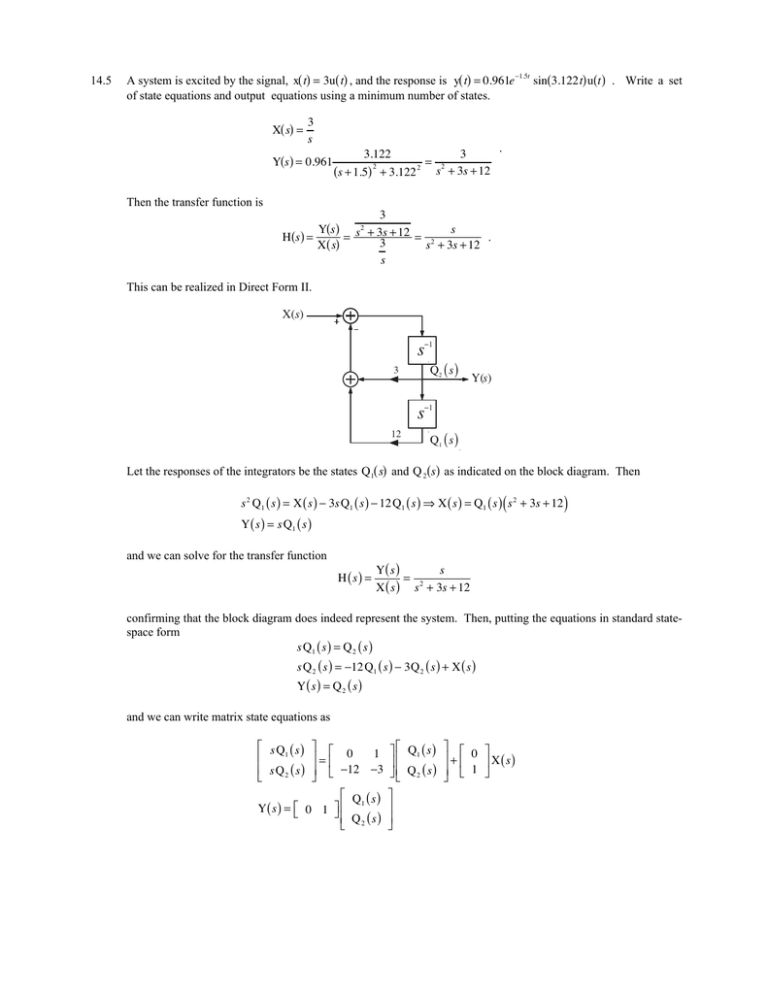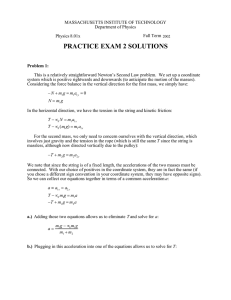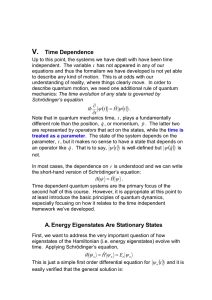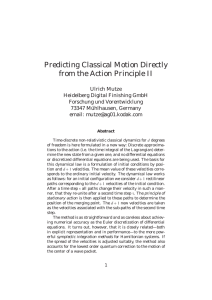( ) ( )
advertisement

14.5 A system is excited by the signal, x( t) = 3u( t) , and the response is y( t) = 0.961e −1.5t sin(3.122t) u(t ) . Write a set of state equations and output equations using a minimum number of states. X( s) = 3 s Y(s) = 0.961 3.122 3 = 2 2 2 s + 3s + 12 (s + 1.5) + 3.122 . Then the transfer function is 3 Y(s) s2 + 3s + 12 s H (s ) = = = 2 . 3 X( s) s + 3s + 12 s This can be realized in Direct Form II. X(s) 3 12 s−1 Q2 ( s ) Y(s) s−1 Q1 ( s ) Let the responses of the integrators be the states Q1( s) and Q 2 (s) as indicated on the block diagram. Then ( s 2 Q1 ( s ) = X ( s ) − 3s Q1 ( s ) − 12 Q1 ( s ) ⇒ X ( s ) = Q1 ( s ) s 2 + 3s + 12 Y ( s ) = s Q1 ( s ) and we can solve for the transfer function H (s) = ) Y( s ) s = X ( s ) s 2 + 3s + 12 confirming that the block diagram does indeed represent the system. Then, putting the equations in standard statespace form s Q1 ( s ) = Q 2 ( s ) s Q 2 ( s ) = −12 Q1 ( s ) − 3Q 2 ( s ) + X ( s ) Y( s ) = Q2 ( s ) and we can write matrix state equations as ⎡ s Q (s) 1 ⎢ ⎢ s Q2 ( s) ⎣ ⎤ ⎡ ⎡ 1 ⎤ ⎢ Q1 ( s ) ⎥=⎢ 0 ⎥ ⎥ ⎣ −12 −3 ⎦ ⎢ Q 2 ( s ) ⎦ ⎣ ⎡ Q (s) ⎤ 1 ⎥ Y ( s ) = ⎡⎣ 0 1 ⎤⎦ ⎢ ⎢ Q2 ( s) ⎥ ⎣ ⎦ ⎤ ⎡ ⎤ ⎥ + ⎢ 0 ⎥ X(s) ⎥ ⎣ 1 ⎦ ⎦



